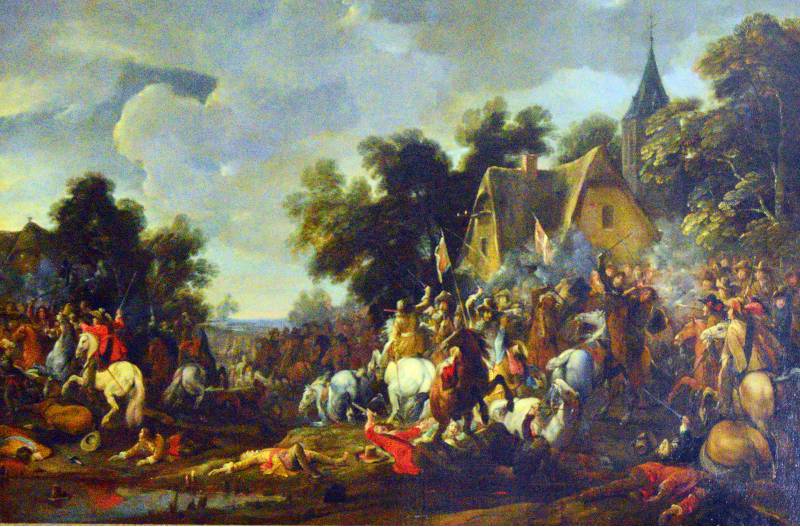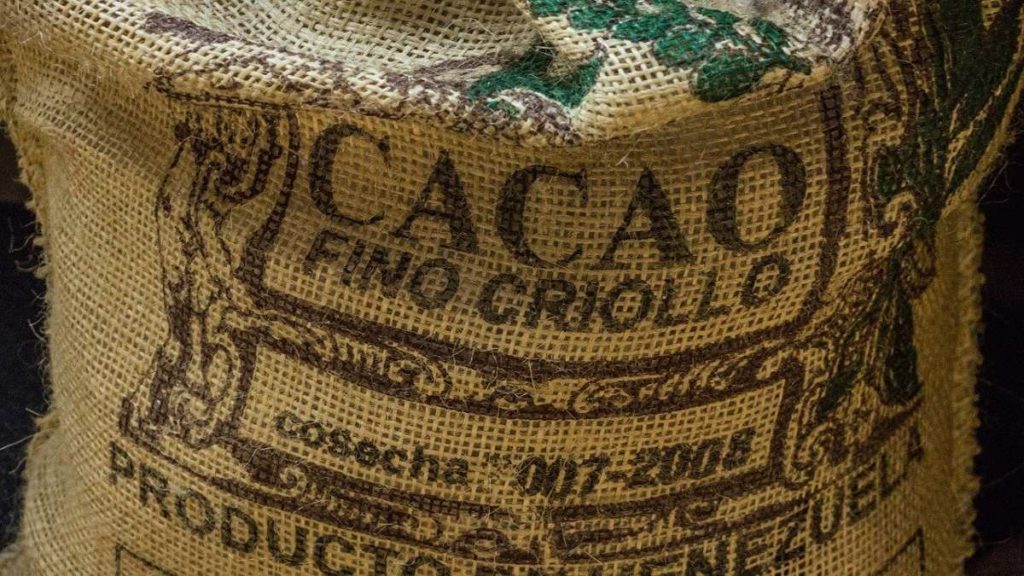As a cacao farmer in Cambodia from Dutch origin, I developed a deep interest in the roots of Asian cacao, even more because the Dutch played such an incredibly important role in the success of cacao in Asia; a role that has actually remained totally underexposed.
In an earlier article, I described the existence of a Dutch cacao route, going all the way from Venezuela to Malaysia through Ceylon. But I struggled with the fact that the Dutch themselves hardly registered their cacao adventures, despite the fact that they had become the biggest economic world power in the 17th century and that Amsterdam developed into the largest trading hub for cacao in the world.
Now I discovered that there is a reason for this lack of documented exploits: most of the massive cacao trade was illegal; at least by Spanish standards.
The first cacao plantations in Venezuela
The Spanish started to develop an interest in cacao in the first half of the 16th century. Mexico was the first region where they collected cacao from. Though depopulation in Mexico soon resulted in a shift of the cacao centre to the fertile areas of Guatemala. But according to Dauril Alden in the 1976 essay “The significance of cacao production in the Amazon Region” also Guatemala production soon declined in favour of two regions where cacao had not been cultivated in pre-Columbian times: Ecuador (Quito) and Venezuela (Caracas).
There are records by the priest Vazques de Espinosa of a flourishing Ecuadorian cacao growth from 1617 onwards, and of Venezuela cacao plantations around Caracas as early as 1615. And by all means, these yields were quite impressive for those days: from 3 million pounds of cacao in the first decennia of the 17th century to 8 million pounds at the end of that era – mostly traded through the Mexican market. But the exports to Spain remained remarkably low, fluctuating around half a million pounds per year.
Eighty-Years War
In Europe, the Dutch fought a long, devastating but at the end successful independence war of eighty years against their Spanish rulers. At the end of the 16th century, seven provinces in the LowLands were more or less free from any Spanish influence, while the Southern part – later Belgium – remained under the control of the Spanish. And immediately after the departure of the Spanish, the Dutch started an intensive construction of wooden sea-going vessels with which they rivalled the world hegemony of their previous despots and of the Portuguese.

Curacao
In 1621 the Dutch West India Company (WIC) was chartered to explore and trade in and from the Americas. Especially the island of Curacao and her excellent natural harbour, close to the coast of Venezuela got the attention and interest of the WIC. In 1634 a fleet under Admiral van Walbeeck invaded the island and defeated the Spaniards.
The Dutch did not waste any time, they made direct contact with indigenous traders in Venezuela out of sight of the Spanish colonists, and in that same decade, the first Venezuelan cacao arrived in Amsterdam. In the following decades, the Hispanos had to watch with sorrow how the Dutch set up intensive trade from Curacao with Venezuelan cacao growers. It is estimated that almost two-thirds of the total cacao production of Venezuela found its way to the Netherlands in the next 150 years through Curacao.
Caracas Company
But no matter how you turn it, the Dutch cacao trade was illegal, especially in the eyes of the Spanish, although the latter failed to curb this smuggling. Not in the least because the Dutch dominated most of the sea routes. It was the time of Dutch pirates like Admiral Piet Heyn who captured the Spanish silver fleet off Cuba in 1628.
The Spaniards tried to turn the tide by installing the Compañía Guipuzcoana, the Caracas company, in 1728, an organization to ensure a monopoly in trade between Venezuela and Spain. However, it never became fully successful and in 1785 the organization was dissolved. One of the causes was the decline of the Spanish empire and at the same time the growing power of not only the Dutch but also the British and the French in the Caribbean.
Superior Quality
During the 18th century, Venezuelan cacao came to be esteemed as superior in quality to all others grown in the New World. Especially compared to the Quitoan cacao which grew on Forastero cacao trees while the Venezuelan cacao found its origins in Criollo cacao. The other European powers tried their luck with cacao plantations as well in their newly conquered colonial areas: England in Jamaica, the French in Martinique, Guadeloupe, Haiti and Cayenne, and the Dutch in the area next door to Venezuela: Suriname. But despite all efforts, cacao from Venezuela kept dominating the European markets not least because of the much better quality.
No Amelonado in Suriname
In the article ‘History of Cacao Culture in Suriname’, published in 1924 in the ‘West-Indische Gids’ author A. Reyne declares that the cacao trees in Suriname look more like the Venezuelan Criollo variety than the Brazilian Amelonado cacao tree. It totally makes sense. It is more than likely that the Dutch settlers got their cacao plants from neighbouring Venezuela through friendly indigenous traders. This is an important remark because the Amelonado tree from the Amazon territories of the Portuguese (Brazil) would later be exported to the African region. And as far as I could research, this Amelonado variety never reached the Asian continent.
The first records of growing cacao in Suriname date from 1702. In 1741 there already seemed to be 78 cacao plantations along the principal rivers of Suriname. Yield increased to 600,000 pounds in the course of the next decades but it never came close to the highly successful coffee production in Suriname.
The Missing Link
In a previous article, I showed that the Dutch introduced cacao in Ceylon (Sri Lanka), but it was long after they kicked out the Portuguese in a collaboration with the local army of King Rajasinghe II. However, they never managed to cultivate cacao commercially in Ceylon. This was done by the British in the 19th century.
The Dutch only experimented with cacao in the botanical garden at Kalutara. But where did this cacao come from? An important question because from Ceylon the Dutch brought cacao to Malacca, Malaysia in 1770, and from here cacao spread across the South-East Asian continent with the exception of the Philippines where the Spanish introduced cacao as a commercial crop.
Conclusion
Considering the arrival of experimental cacao in Ceylon in the first half of the 18th century, and taking into account the start of commercial cacao production in Suriname by the Dutch in the same period, it seems plausible that Dutch traders brought the cacao tree not from Venezuela but from some of the first Dutch cacao plantations in Suriname. I can’t prove it but it seems very obvious. It puts in the spotlight something that has been underexposed for so long – rightly or wrongly -: the dominant role of the Dutch in the introduction of cacao in Asia.








Thank you for the interesting article! Some additional remarks on the Suriname part. Cacao cultivation in Suriname has long and widely been held to have started in 1686 under Dutch rule, with cacao from Venezuela. There are some indications though that cultivation may have started somewhat earlier, when Suriname was under British Rule (from 1652 – 1667), possibly with wild ‘Guianas’ cacao that grows in the interior.
Dutch cultivation seems to have started with a criollo variety. The first half of the 18th century the plantings flourished, but the feeble criollos were susceptible to fungi and stem canker. By the second half of that century many criollos were being replaced with sturdier Foreastero type trees., leading to a situation similar to that on Trinidad where criollos and forasteros were crosspolinating in the field on plantations, creating hybrids like the Trinitarios.
Though cacao cultivation dwindled near the end of the 18th century, from the 1850’s it skyrocketed. With trees grown from seed of the older hybrid trees Suriname managed to export 4,500 MT in 1895, which in that year accounted for 5% of the total world cacao production.
Thank you for the additional information. Your website at tanbun.org was very informative. I hope I can come over to Amsterdam and try some of your chocolate!
Hi Nick, you can find us in Paramaribo, Tan Bun Skrati is a Surinamese company. You are most welcome to the Wild Coast on the Guiana Shield!